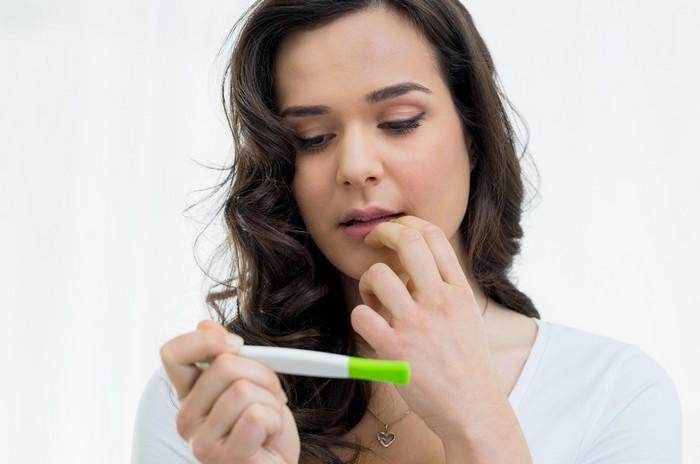Understanding the menstrual cycle is crucial for many women, especially those trying to conceive. Ovulation is a key event in this cycle. It is the time when an egg is released from the ovary, making it available for fertilization. Knowing when ovulation occurs can help in family planning and understanding fertility. This article explores the timing of ovulation in relation to the menstrual cycle and provides insights into factors that can affect this timing.
Understanding the Menstrual Cycle
What is the Menstrual Cycle?
The menstrual cycle is a monthly series of changes a woman’s body goes through in preparation for the possibility of pregnancy. The average menstrual cycle lasts about 28 days but can range from 21 to 35 days in adults.
Phases of the Menstrual Cycle
The menstrual cycle consists of four main phases:
Menstrual Phase: This is the beginning of the cycle. It lasts about 3 to 7 days. During this phase, the lining of the uterus sheds if no pregnancy has occurred.
Follicular Phase: This phase begins on the first day of menstruation and lasts until ovulation. The body produces hormones that stimulate the ovaries to mature follicles, which contain eggs.
Ovulation Phase: Ovulation occurs when a mature egg is released from the ovary. This typically happens in the middle of the cycle.
Luteal Phase: Following ovulation, this phase lasts about 14 days. The body prepares for a possible pregnancy. If fertilization does not occur, menstruation begins, and the cycle restarts.
When Does Ovulation Occur?
Average Timing of Ovulation
Most women ovulate approximately 14 days before the start of their next menstrual period. For a woman with a typical 28-day cycle, this means ovulation occurs around day 14. However, the exact timing can vary depending on the length of an individual’s cycle.
Calculating Ovulation Based on Cycle Length
To determine when you may ovulate, you can use the following formula:
Day of Ovulation = Length of Cycle – 14 Days
For example, if you have a 30-day cycle, your ovulation day would be around day 16 (30 – 14 = 16).
Variability in Ovulation Timing
Many women do not have a standard 28-day cycle. If your cycle is longer or shorter, your ovulation will also occur at a different time. For example, in a 21-day cycle, ovulation may happen around day 7. Conversely, in a 35-day cycle, ovulation may occur around day 21. It is essential to track your cycle to understand your unique ovulation timing.
Signs of Ovulation
Recognizing Ovulation Symptoms
While the timing of ovulation can be calculated, many women also experience physical signs indicating that they are ovulating. These signs include:
Changes in Cervical Mucus: Around ovulation, cervical mucus becomes clearer and stretchier, resembling egg whites. This change helps sperm travel through the reproductive tract.
Basal Body Temperature Increase: After ovulation, a woman’s basal body temperature (BBT) usually increases slightly due to hormonal changes. Tracking BBT over a few months can help identify patterns related to ovulation.
Ovulation Pain: Some women experience mild pain or cramping on one side of the lower abdomen during ovulation, known as mittelschmerz.
Increased Libido: Many women notice an increase in sexual desire around the time of ovulation.
Using Ovulation Prediction Kits
For women looking for a more precise way to identify their ovulation day, ovulation prediction kits are available. These kits test hormone levels in urine to predict ovulation. They measure the surge in luteinizing hormone (LH), which typically occurs 24 to 36 hours before ovulation.
see also: Do Barren Women Have Periods?
Factors Influencing Ovulation Timing
Irregular Cycles
Many women experience irregular menstrual cycles due to various factors, including stress, hormonal imbalances, or medical conditions. Irregular cycles can make it challenging to predict ovulation accurately. Tracking symptoms and using ovulation kits can be especially helpful for those with irregular cycles.
Age and Ovulation
A woman’s age can also impact her menstrual cycle and ovulation timing. As women age, their cycles may become less regular, and ovulation may occur later in the cycle. This is particularly common as women approach menopause.
Health Conditions Affecting Ovulation
Certain health conditions can also affect ovulation. Conditions such as polycystic ovary syndrome (PCOS), thyroid disorders, and endometriosis can lead to irregular or absent ovulation. Women with these conditions should consult healthcare providers for personalized guidance on managing their reproductive health.
The Importance of Tracking Ovulation
Benefits of Understanding Ovulation
Understanding when you ovulate is beneficial for several reasons. For women trying to conceive, knowing the ovulation window can help time intercourse for optimal chances of pregnancy. Conversely, for those looking to avoid pregnancy, tracking ovulation can help identify less fertile days.
Using Apps and Tools
Many apps are available to help track menstrual cycles and predict ovulation. These apps can log cycle length, symptoms, and other relevant information. Over time, they can generate patterns that help in predicting future ovulation dates more accurately.
Conclusion
Knowing how many days after your last period you ovulate can significantly impact family planning efforts. While ovulation typically occurs around 14 days before your next period, this timing can vary based on individual cycle lengths. Understanding the menstrual cycle, recognizing ovulation signs, and using tools such as ovulation prediction kits can enhance your ability to identify your fertile window.
It is essential to be aware of factors that may influence ovulation, including irregular cycles and health conditions. By tracking your cycle and recognizing ovulation signs, you can gain valuable insights into your reproductive health. For those experiencing difficulties with ovulation or conception, consulting a healthcare provider can provide additional support and guidance. Remember that every woman’s body is unique, and understanding your cycle is an essential step in managing your reproductive health effectively.
Related topics:



























